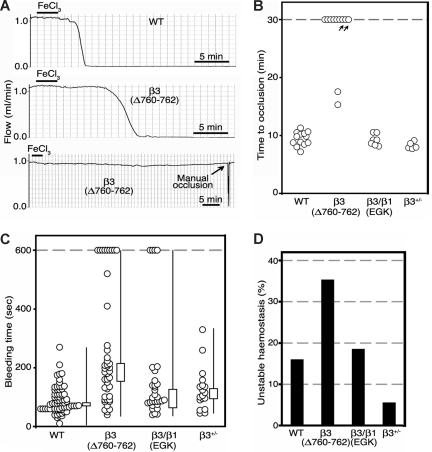Figure 2.
β3(Δ760-762) mice are resistant to carotid artery thrombosis. (A) Carotid artery blood flow profiles from 1 representative WT and 2 β3(Δ760-762) mice. Arteries were exposed to FeCl3 for 3 minutes beginning at t = 0, and blood flow was measured for at least 30 minutes. (B) Times to thrombotic occlusion for each mouse studied: WT, n = 13; β3(Δ760-762), n = 11; β3/β1(EGK), n = 7; β3+/−, n = 5. Two β3(Δ760-762) mice (arrows) showed either an approximately 90% reduction in initial flow rate, or restoration of flow within 6 minutes after complete occlusion. (C) Tail bleeding times for initial cessation of bleeding. Each circle indicates 1 animal: WT, n = 56; β3(Δ760-762), n = 46; β3/β1(EGK), n = 31; β3+/−, n = 18. Box graphs indicate median plus or minus SEM, and the total distribution for each genotype. (D) Frequency of rebleeding from tail wounds: WT, n = 56; β3(Δ760-762), n = 34; β3/β1(EGK), n = 27; β3+/−, n = 18.

